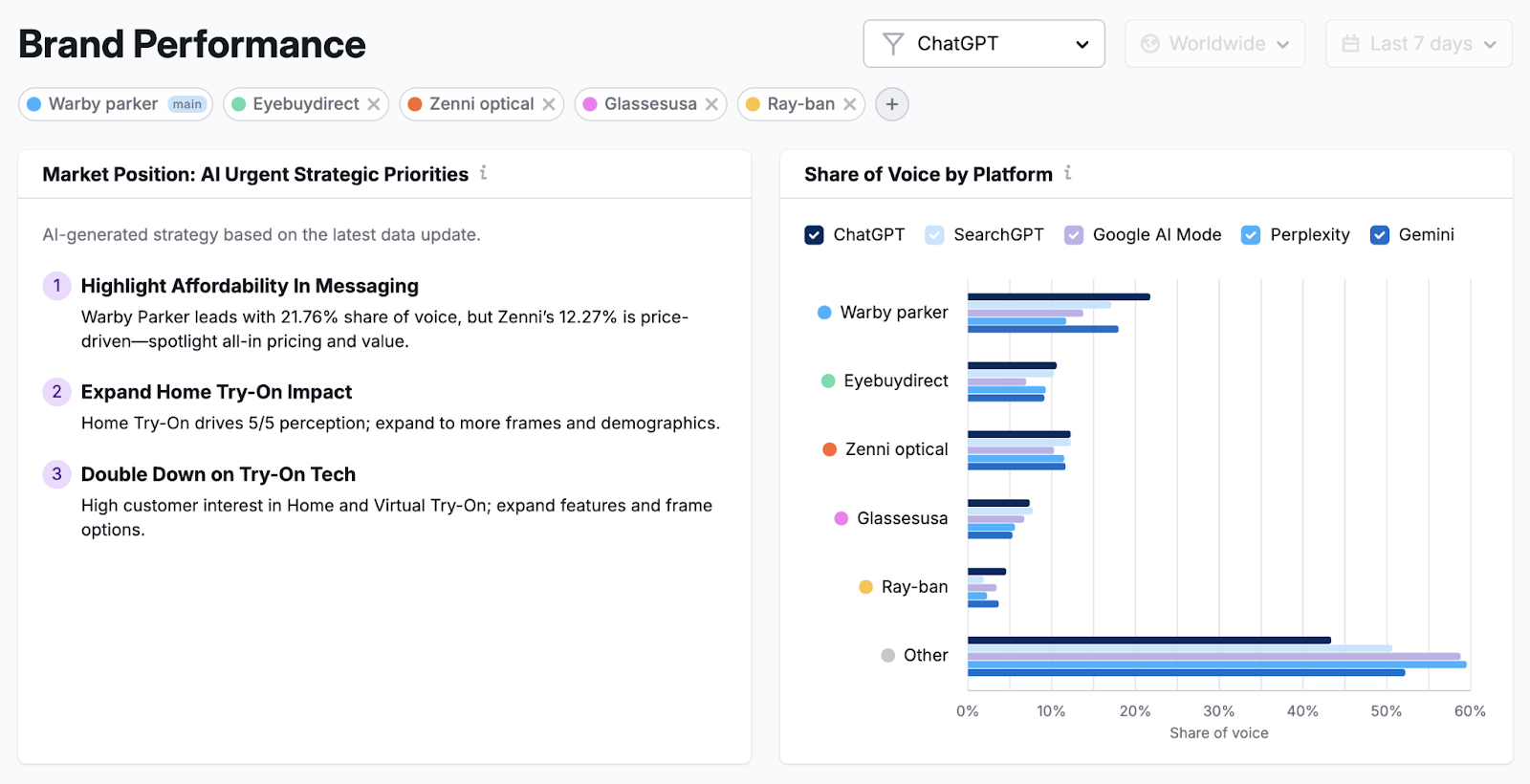What Are AI Citations?
In digital marketing, AI citations are linked references to specific sources or webpages that an AI system used to help generate or support a response.
Here are examples of AI citations in a Google AI Overview:
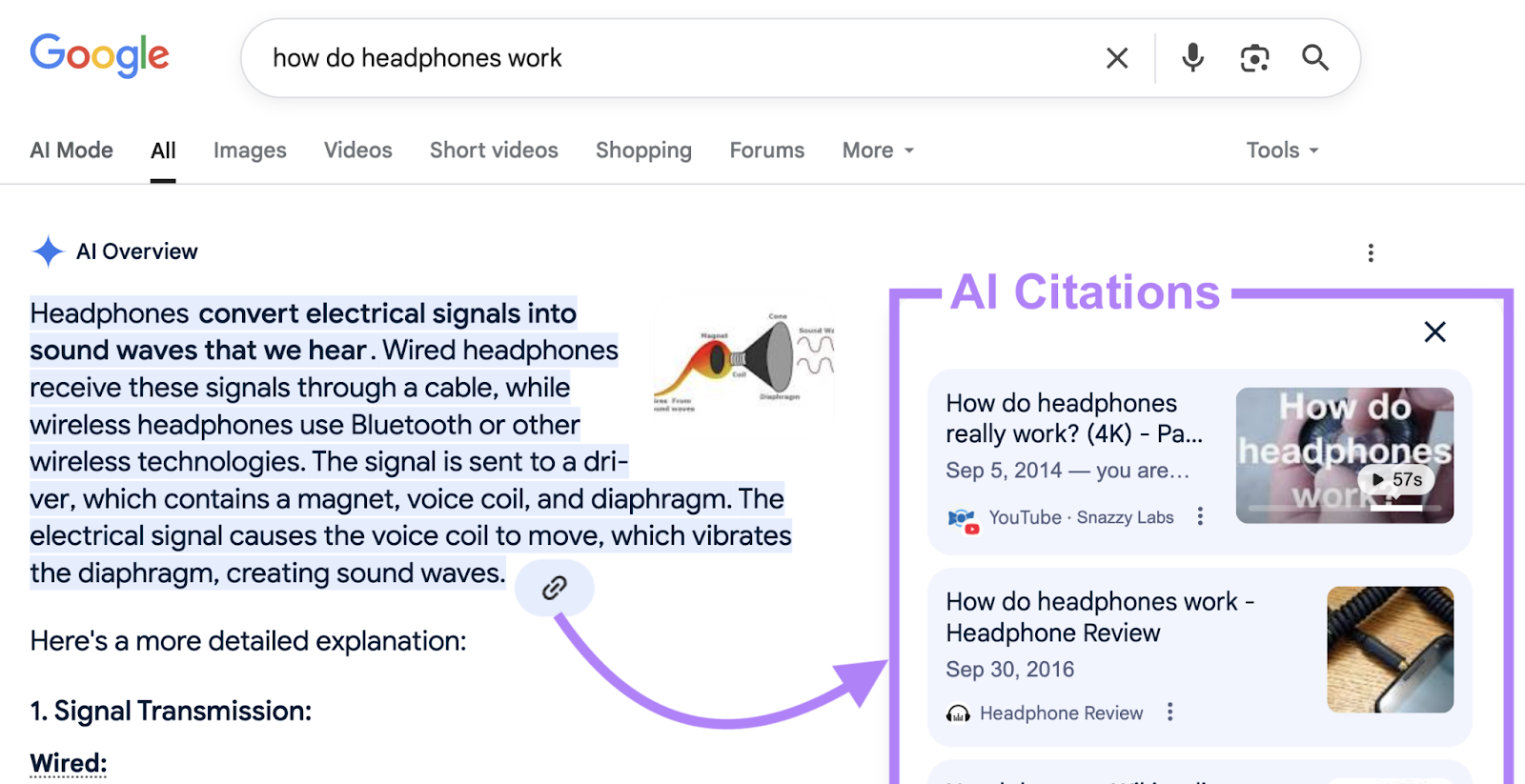
Here are examples of AI citations in ChatGPT:
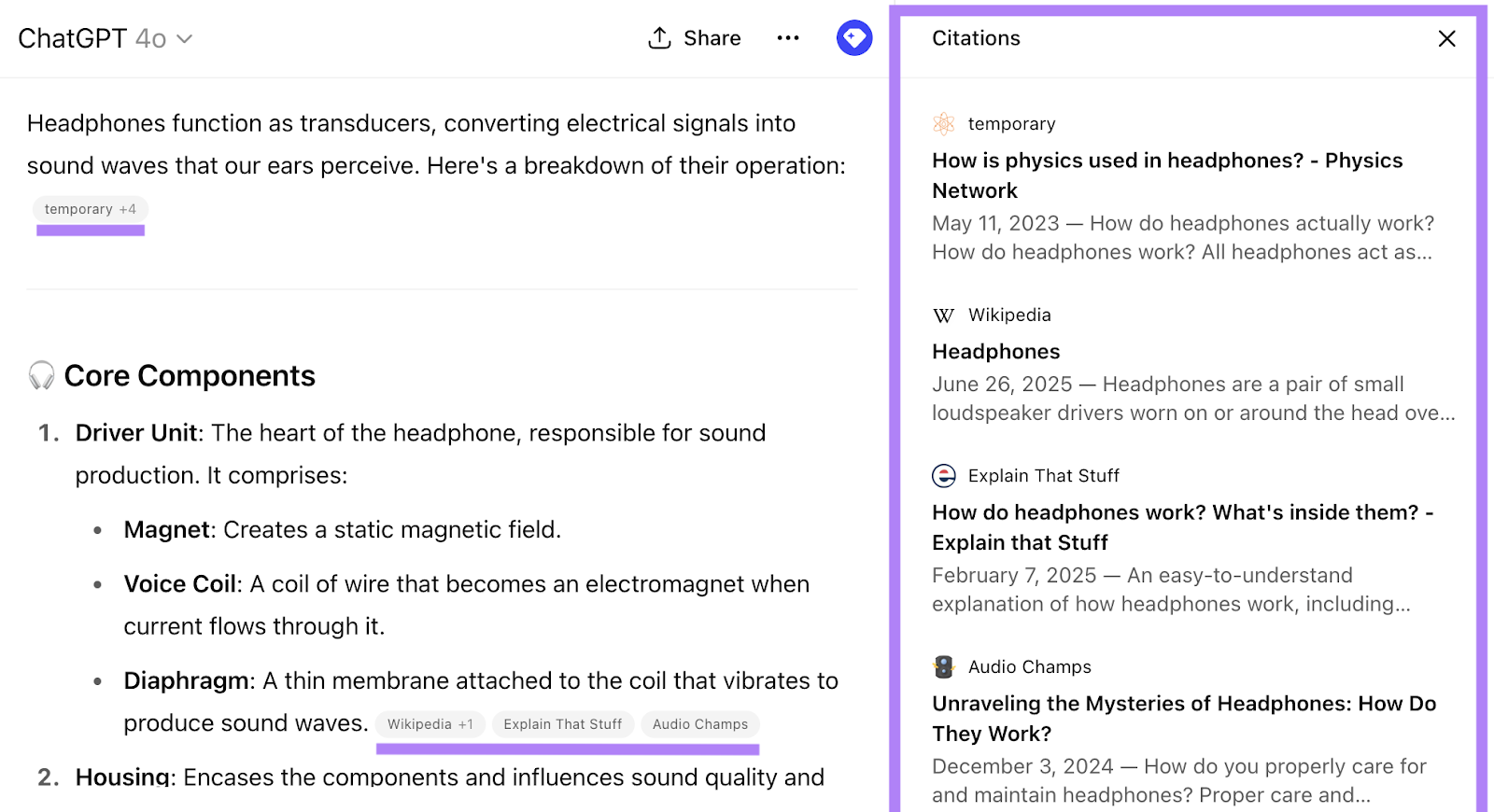
Why Are AI Citations Important?
AI citations are important in digital marketing because they affect your brand’s visibility and portrayal in AI responses, which are increasingly prevalent in customer journeys.
Citations for your website and other websites can both affect your brand:
- First-party citations (i.e., citations for your website) can boost brand awareness, strengthen your brand image, and drive traffic to your website
- Third-party citations (i.e., citations for other websites) can impact your business if the referenced content mentions your brand or your competitors
If a user submits a relevant prompt, you want the LLM to cite your content and/or third-party content that’s favorable to your brand. Like this:
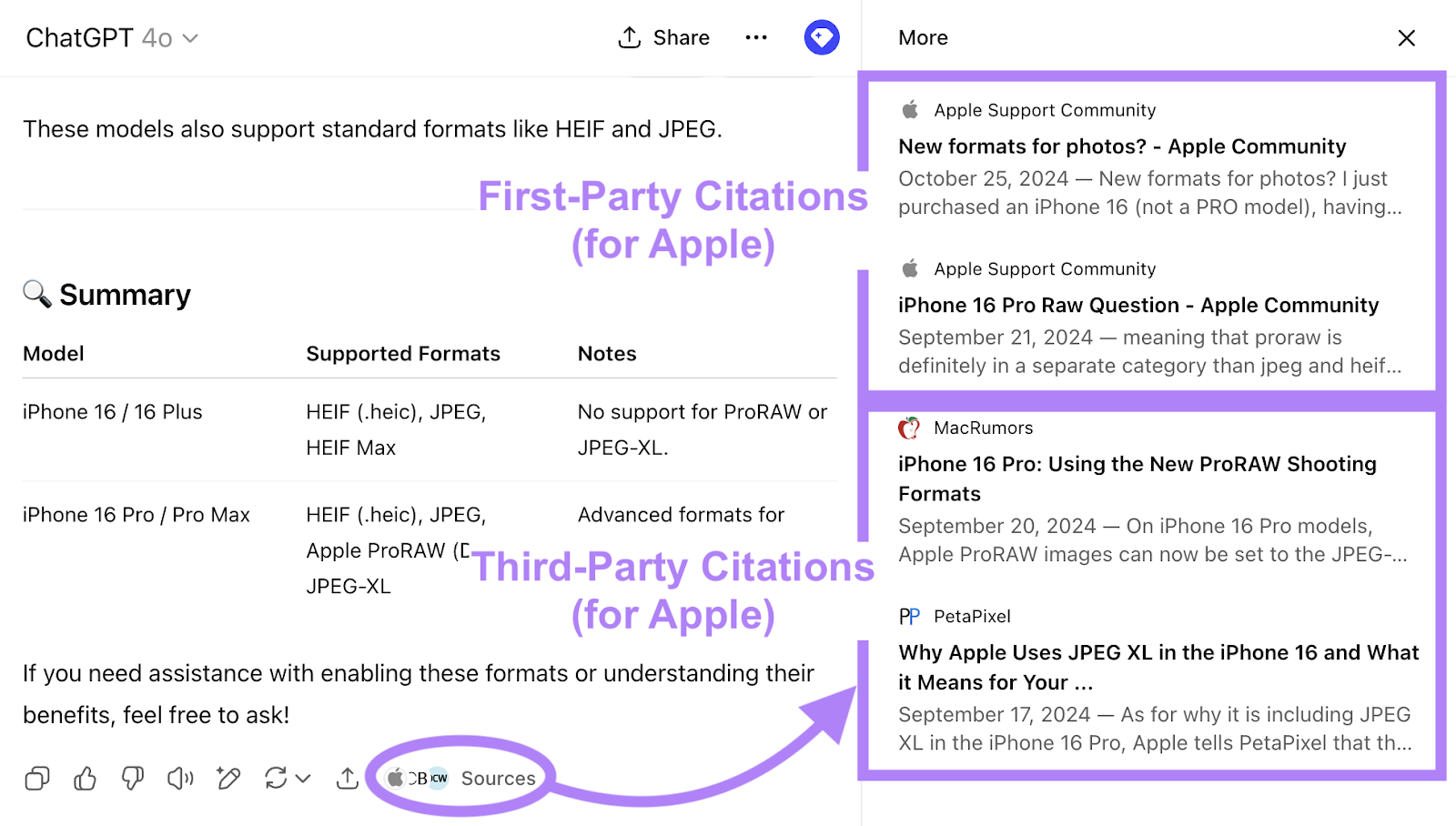
You don’t want LLMs to cite content that’s unfavorable to your brand or promotes your competitors instead of you.
Semrush’s AI search study suggests that visitors from AI search experiences are 4.4x more likely to convert than visitors from traditional search experiences. And that AI search traffic could exceed traditional search traffic in 2028.
So, AI citations could soon drive more revenue for your brand than traditional search engine rankings do.
Types of AI Citations [with Examples]
There are three main types of AI citations:
- Informational citations
- Product citations
- Multimedia citations
Informational Citations
Informational citations are references to webpages or documents that the AI used to support a factual claim, explanation, or summary. These citations allow users to verify the information and continue their learning.
Here’s an example of some informational citations in ChatGPT:

Product Citations
Product citations are links to product pages within AI-generated responses. These citations allow users to continue their purchasing journey.
Here’s an example of product citations in Google AI Mode:
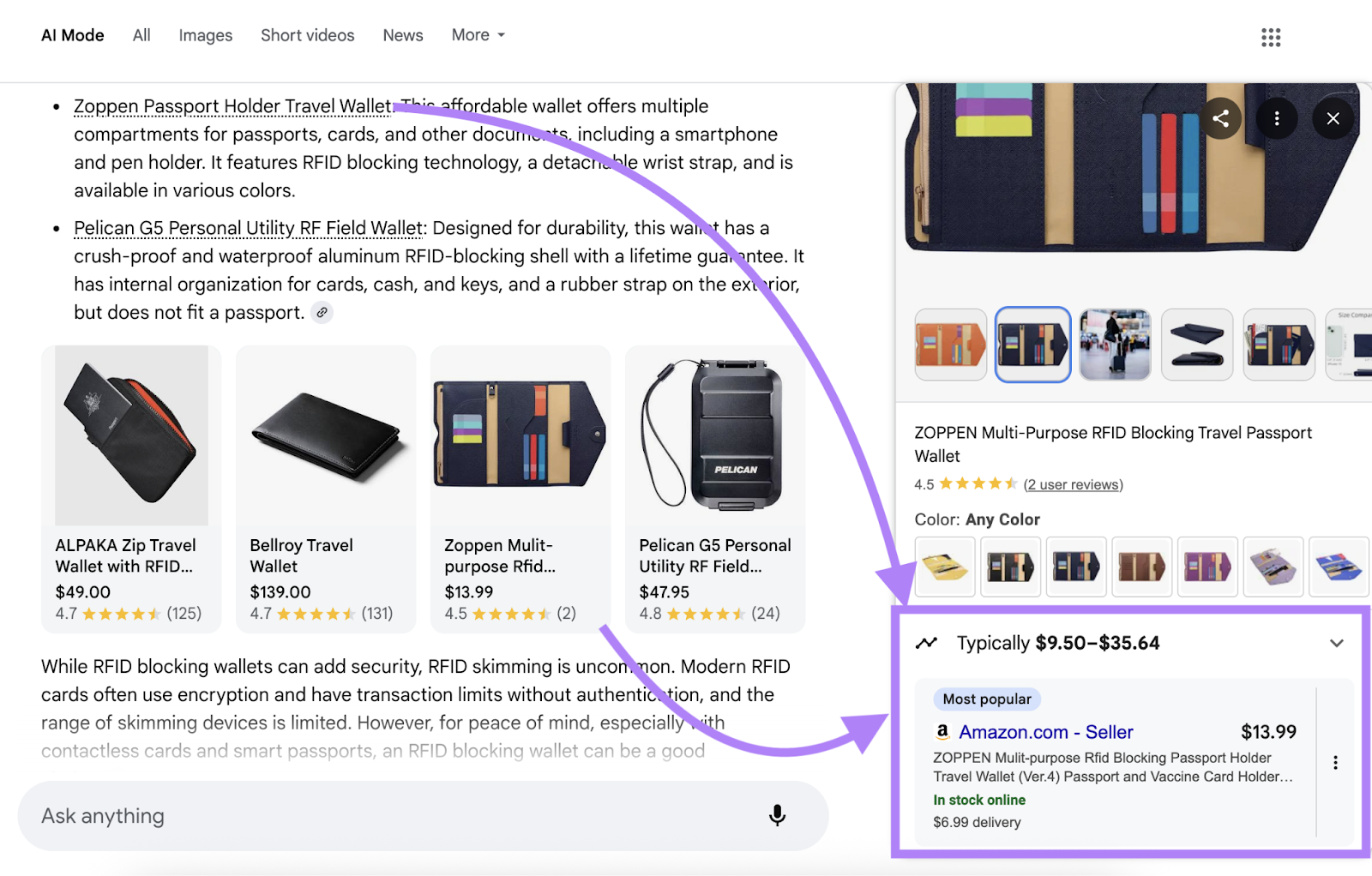
Multimedia Citations
Multimedia citations are linked references to image sources, video sources, or other multimedia content sources.
Here’s an example of some web image results in ChatGPT:
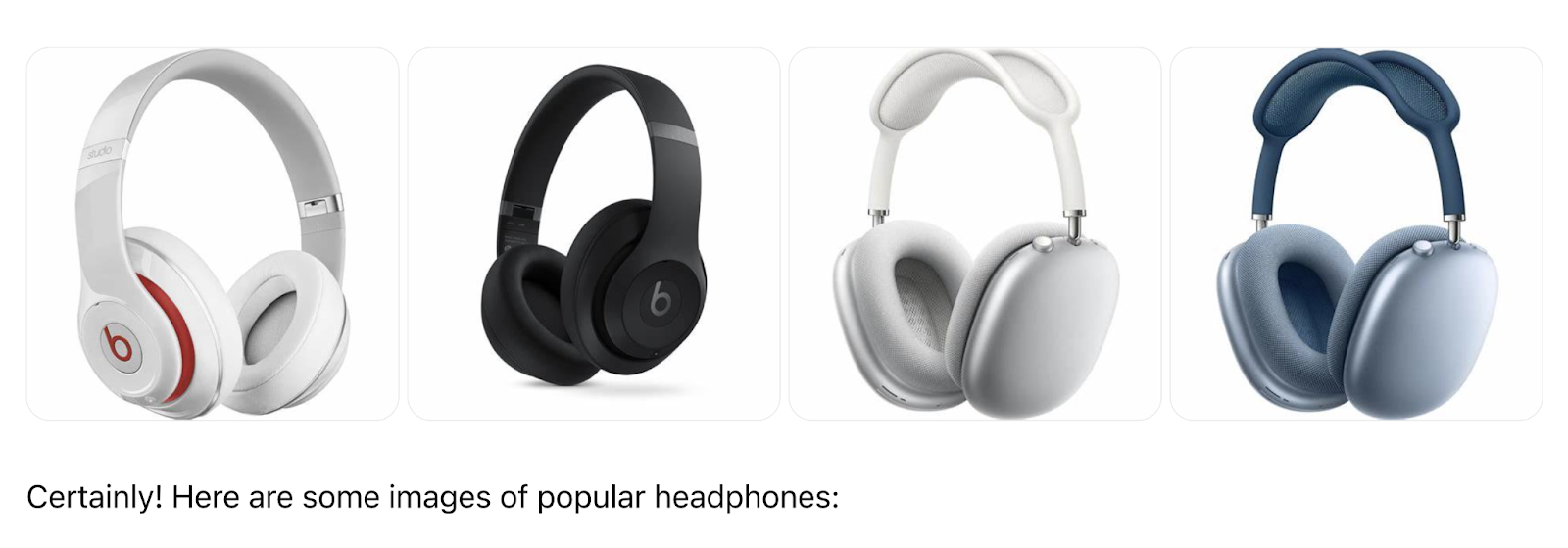
The user can see the citation after clicking an image:
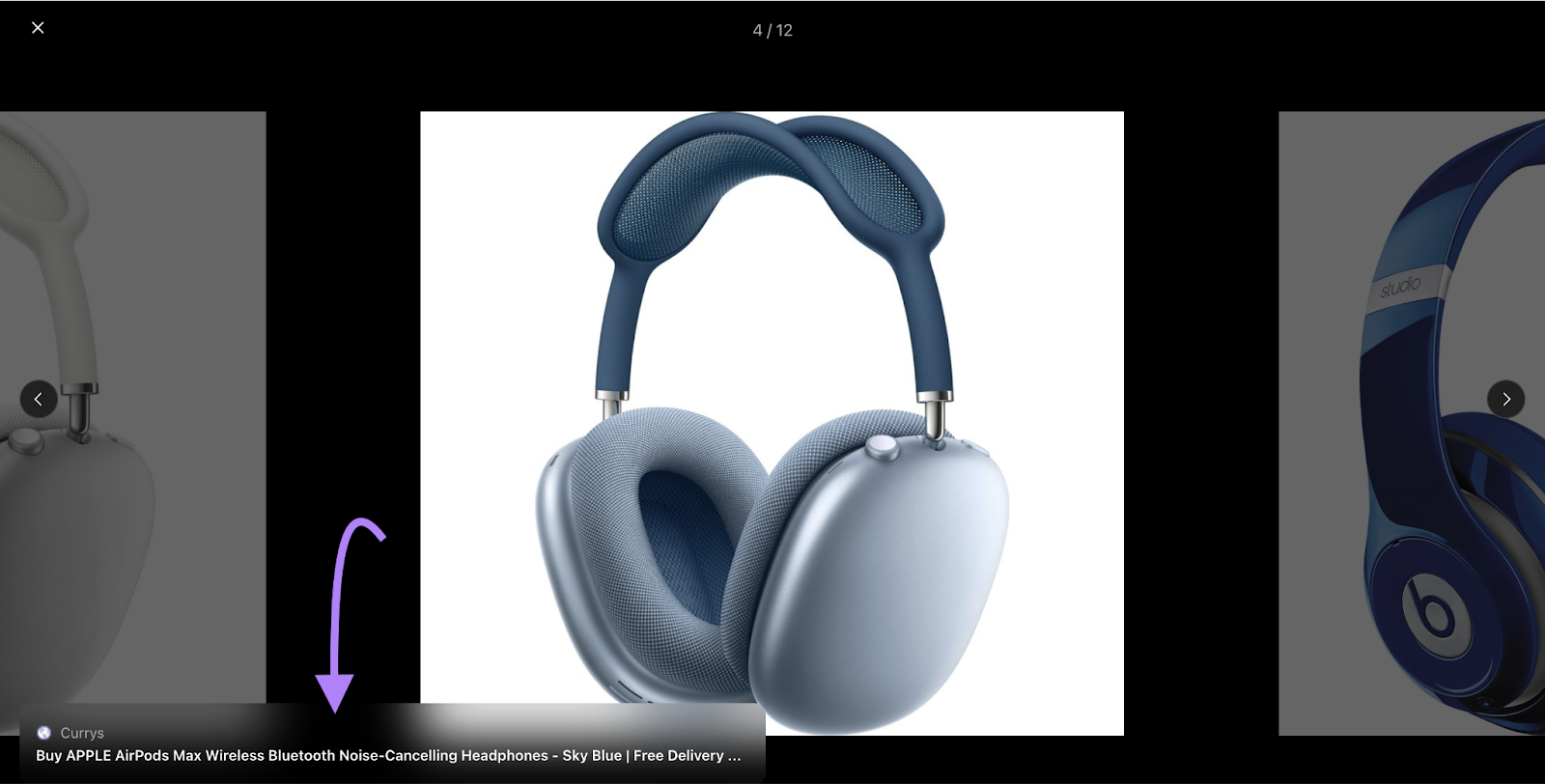
Do AI Systems Always Provide Citations?
No, AI systems don’t always provide citations in their responses.
AI systems don’t provide citations when they rely solely on their pre-trained knowledge to generate a response.
This is because the AI generates the response based on patterns learned from a broad mix of sources—not from specific, retrievable documents.
Here’s an example of a ChatGPT response with no citations included:
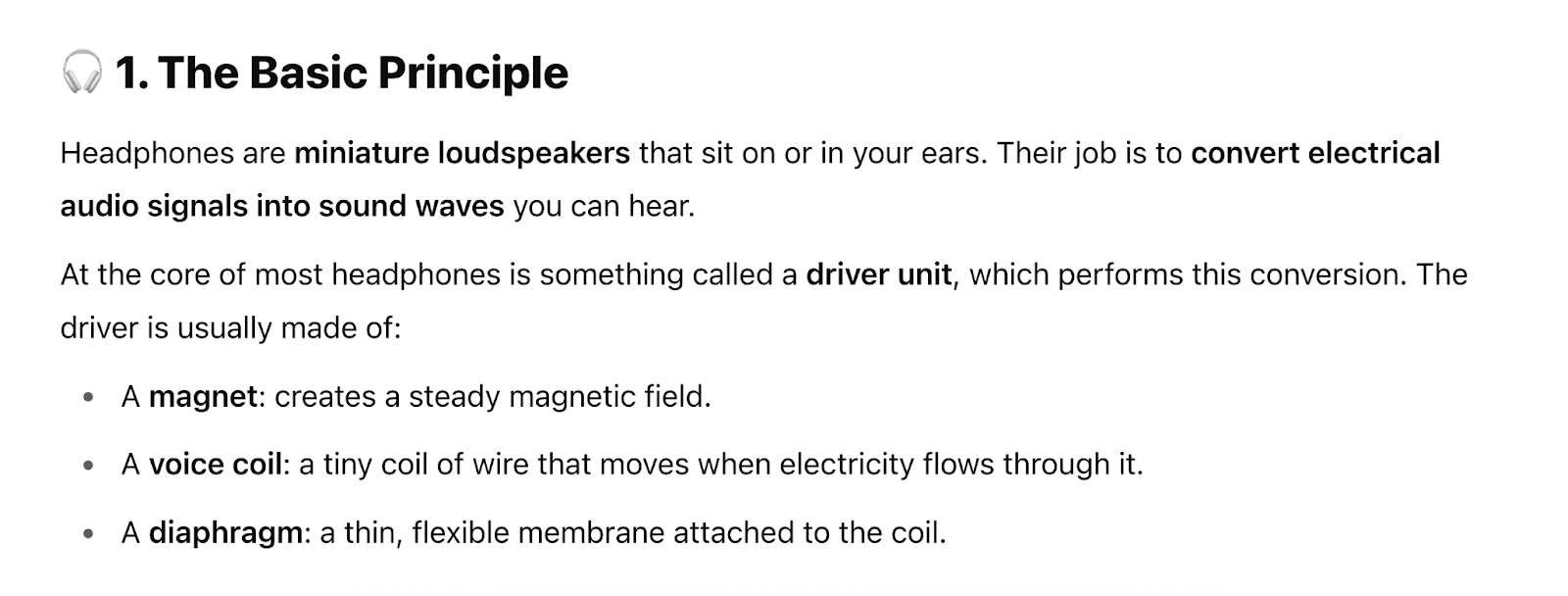
To give you a general idea of AI citation occurrence, I tested 12 varied prompts in ChatGPT 4o without explicitly requesting web search. I discovered that about 42% of responses included at least one citation:

Please note that AI responses can vary significantly based on the individual user, prompt, and conversational context. This data is just designed to give you a general idea of citation usage.
When Do AI Systems Provide Citations?
AI systems provide citations when they retrieve information from an external source—such as the live web or a product database—rather than their internal training data.
Some AI systems—such as Google AI Mode and Google AI Overviews—always provide citations because they’re linked to traditional search by default.
Other LLMs may use external sources when they deem it necessary to provide more accurate, up-to-date, or verifiable information to users.
For example, ChatGPT’s o4-mini model currently has a knowledge cutoff date of May 31, 2024. If you ask about an event after this date, the model automatically searches the web for up-to-date information and provides links to its sources:

Users can also apply ChatGPT’s “Search the web” feature manually.
How to Get AI Citations
You may be able to get AI citations for your website by publishing citation-worthy content, improving your brand’s reputation, making your content accessible to AI crawlers, following SEO best practices, and creating a product feed.
Half of ChatGPT citations refer to business/service websites, according to Semrush’s AI search study. So, there’s high potential for websites like yours to earn citations.
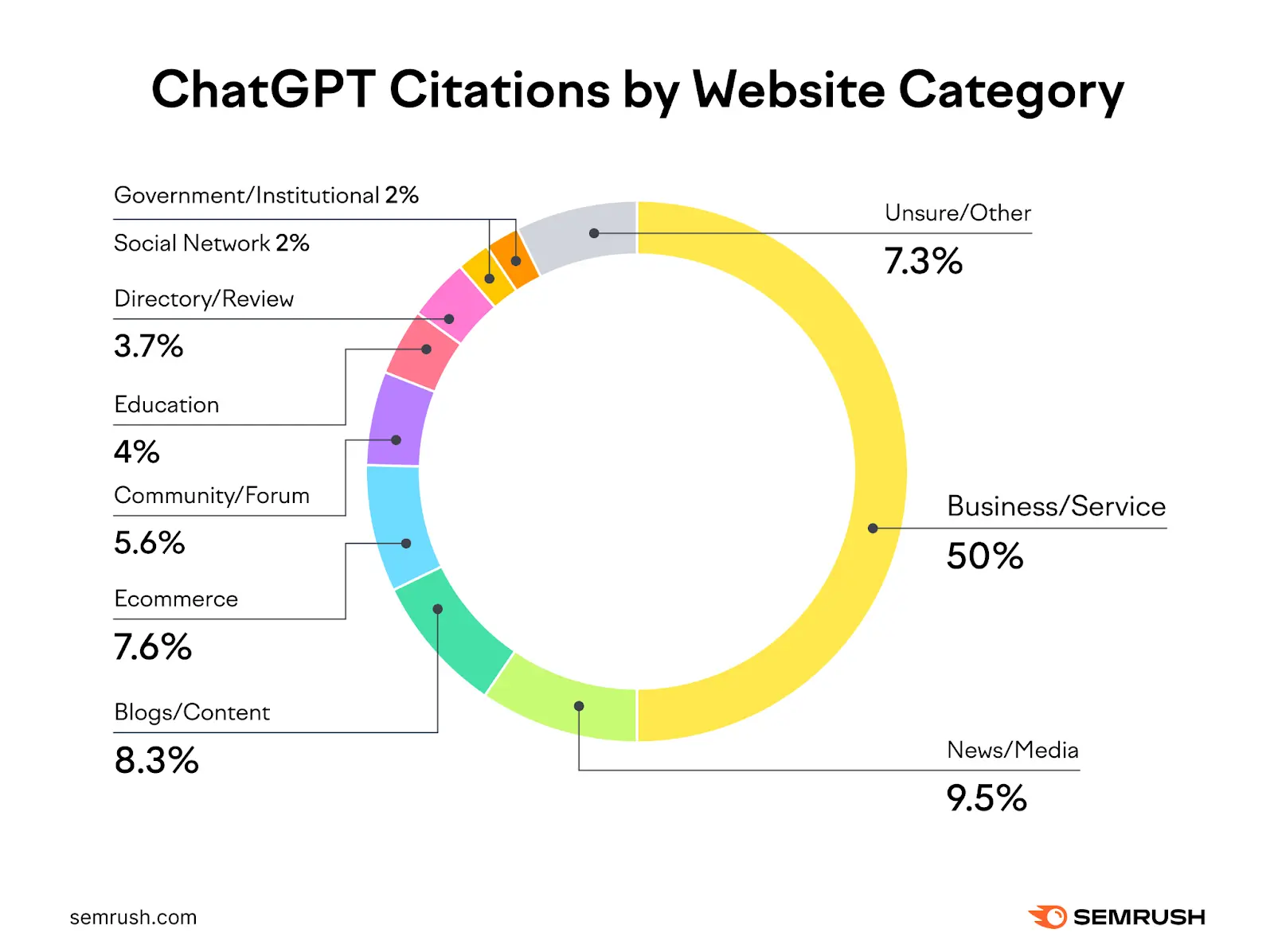
Publish Citation-Worthy Content
Citation-worthy content is original content that helps AI systems satisfy user queries—ideally in a way that pre-trained knowledge can’t.
The following types of content may be most likely to earn AI citations:
| Content Type | Description | Why It Works |
| Original research | Studies that answer previously unanswered questions | LLMs can use your evidence to support specific claims |
| Case studies | In-depth stories demonstrating the success of a product, service, or strategy | LLMs can use your case studies to support specific recommendations |
| Articles that express original ideas or opinions with the intent to influence others | LLMs often want to share unique and diverse perspectives | |
| News content | Up-to-date, accurate articles about current or ongoing events | LLMs can’t rely on pre-trained data for recent events |
| Brand content | High-quality content about your business and offerings | LLMs can trust you to provide the most accurate information about your brand |
The demand for each type of content depends on the niche and target audience.
You can discover the topics your audience discusses in AI platforms with the Semrush AI Toolkit.
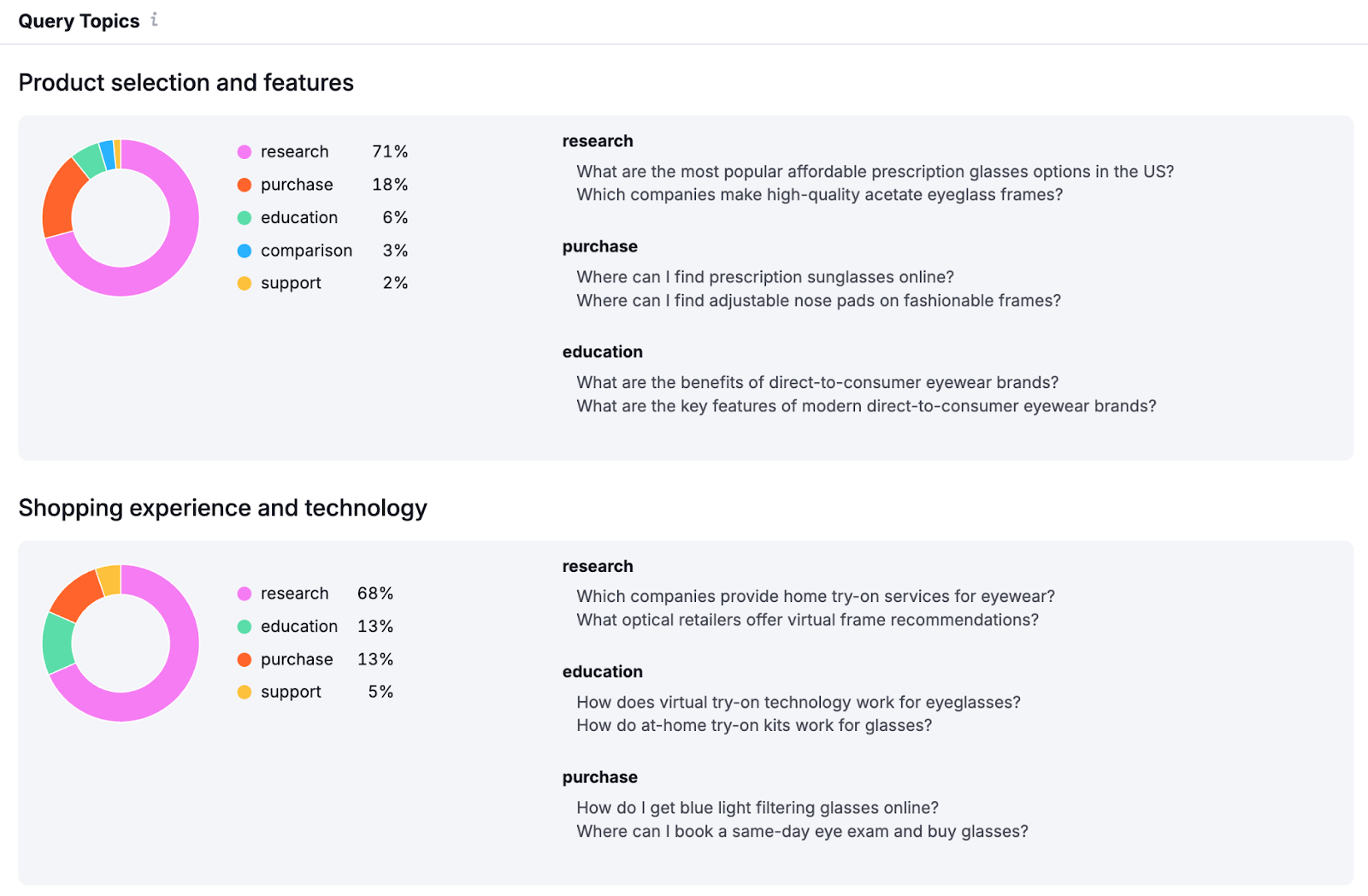
Whatever content you create, make sure it’s LLM-friendly:
- Avoid poetic, vague, or ambiguous language that can be difficult for natural language processing (NLP) systems to interpret
- Mention relevant entities and concepts (and avoid mentioning irrelevant entities or concepts) to boost semantic relevance
- Add useful images and videos to enhance LLM understanding and increase your chance of earning multimedia citations
- Structure your content with descriptive subheadings, making sure to use the appropriate HTML heading tags
- Try to write sentences and paragraphs that make sense in isolation, so LLMs can easily quote or repurpose these “chunks”
Improve Your Reputation and Authority
AI systems may be most likely to cite reputable and authoritative sources, so work to improve your brand’s credibility by:
- Encouraging happy customers to provide reviews or testimonials
- Establishing and clearly communicating a unique value proposition (UVP)
- Demonstrating your brand’s expertise through high-quality, topical content
- Employing digital PR to protect your brand and get your brand mentioned on reputable websites
- Applying link building tactics to get links from reputable websites
- Adding your business to high-quality directories
- Running marketing campaigns that generate a buzz online
- Delivering great products and providing exceptional customer service
Consider tracking your brand mentions (and their sentiment) with a tool like Media Monitoring. That way, you can monitor the impact of your efforts and quickly take action against any negative exposure.
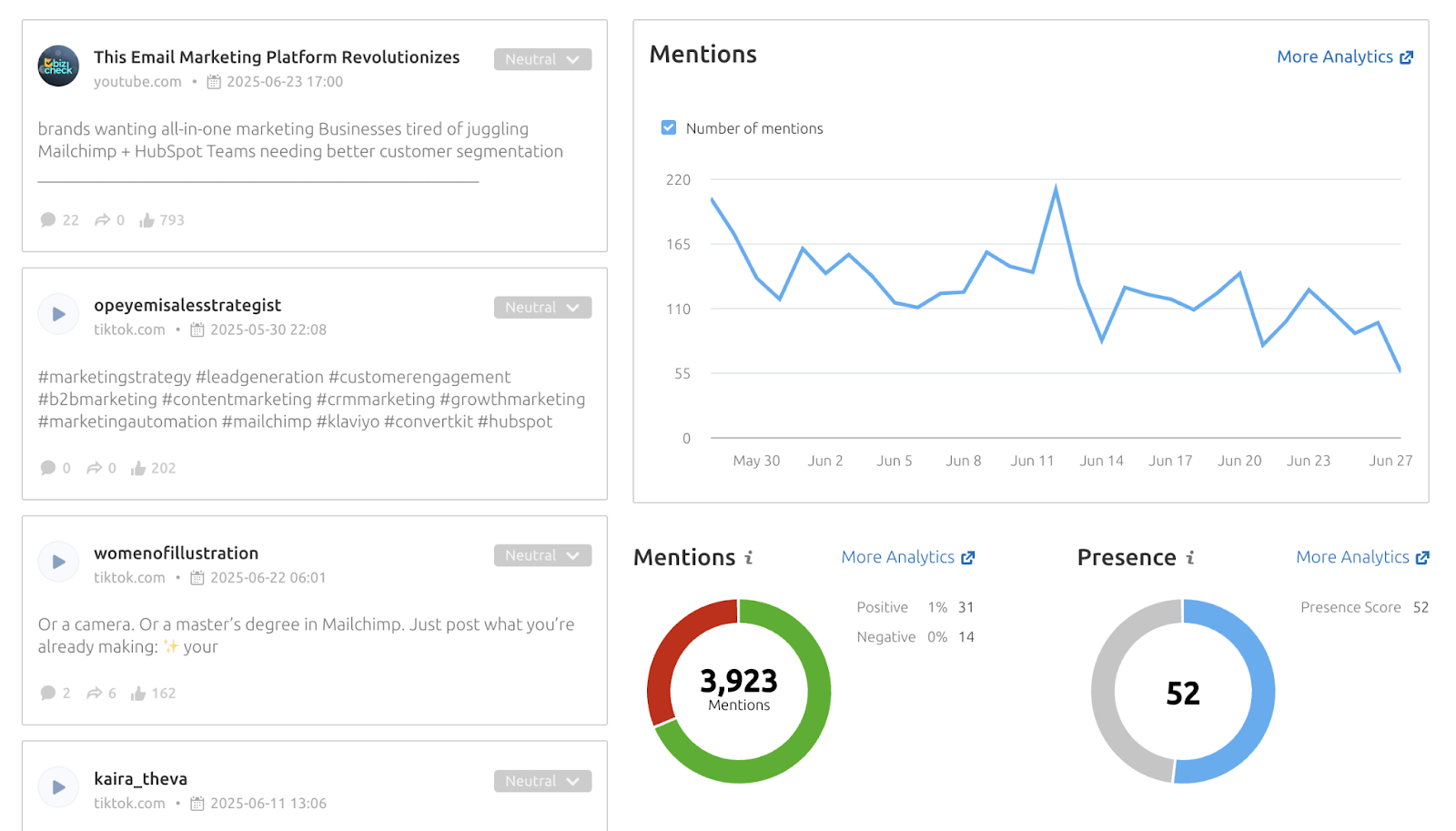
Make Your Content Accessible to AI Crawlers
To ensure your content is eligible to earn AI citations, make the content accessible to AI crawlers.
Activities that may make your content more crawlable include:
- Reducing your website’s reliance on JavaScript rendering. LLMs generally crawl a webpage’s raw HTML, so server-side rendering is preferable.
- Making sure your content is publicly accessible. Content that’s hidden behind a registration wall, payment wall, or other protections may be inaccessible to AI crawlers.
- Creating an llms.txt file. This is a markdown file designed to help LLMs crawl your content effectively (somewhat similarly to the robots.txt file for search engine crawlers).
LLMs haven’t officially adopted the llms.txt format yet, but it could become a standardized approach. Adopting llms.txt early could give you a competitive edge.
You can check the validity of your llms.txt file (and other technical elements) with Semrush’s Site Audit tool.

Follow SEO Best Practices
AI systems commonly source information from live web results, so following search engine optimization (SEO) best practices could help you get more AI citations.
Here are some of the most important aspects of SEO:
- Crawlability and indexability: Make sure your content is accessible to search engine crawlers and eligible to show in search results
- Content quality: Only publish high-quality content that’s useful, accurate, and relevant to your target audience
- Website authority: Establish your website as an industry authority by generating high-quality backlinks and brand mentions
Another element that can help your SEO and AI performance is schema markup.
Use Schema Markup
Using schema markup on your webpages may help AI systems better understand and display your content, which could lead to more citations.
Schema markup basically allows you to add machine-readable labels to different types of data. The resulting data is called structured data.
For example:
- Article schema lets you label article authors, categories, publish dates, etc.
- Product schema lets you label product names, descriptions, colors, etc.
- Offer schema lets you label product prices, shipping details, availability, etc.
Google recommends using JSON-LD to implement schema markup.
Here’s an example of JSON-LD markup on a product page:
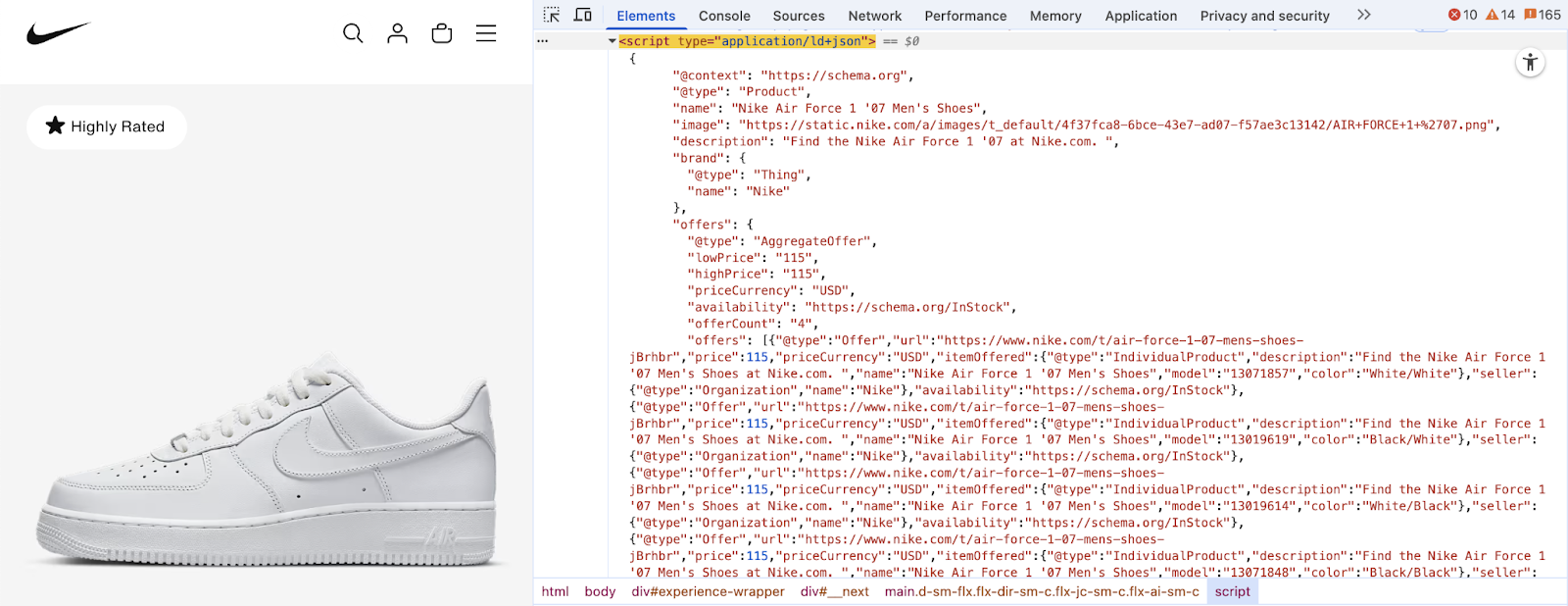
You can check the validity of your schema and get more practical advice for improving your website with the Semrush SEO Toolkit.
For example, you can use the Site Audit tool to check your website for technical errors. And use the On Page SEO Checker to get content recommendations for specific pages.
Create a Product Feed (If Applicable)
A product feed is a structured file listing details about your products, and it may help AI systems to better understand and display your product information. So you can earn more product citations.
Here’s an example of a product feed created in a spreadsheet:
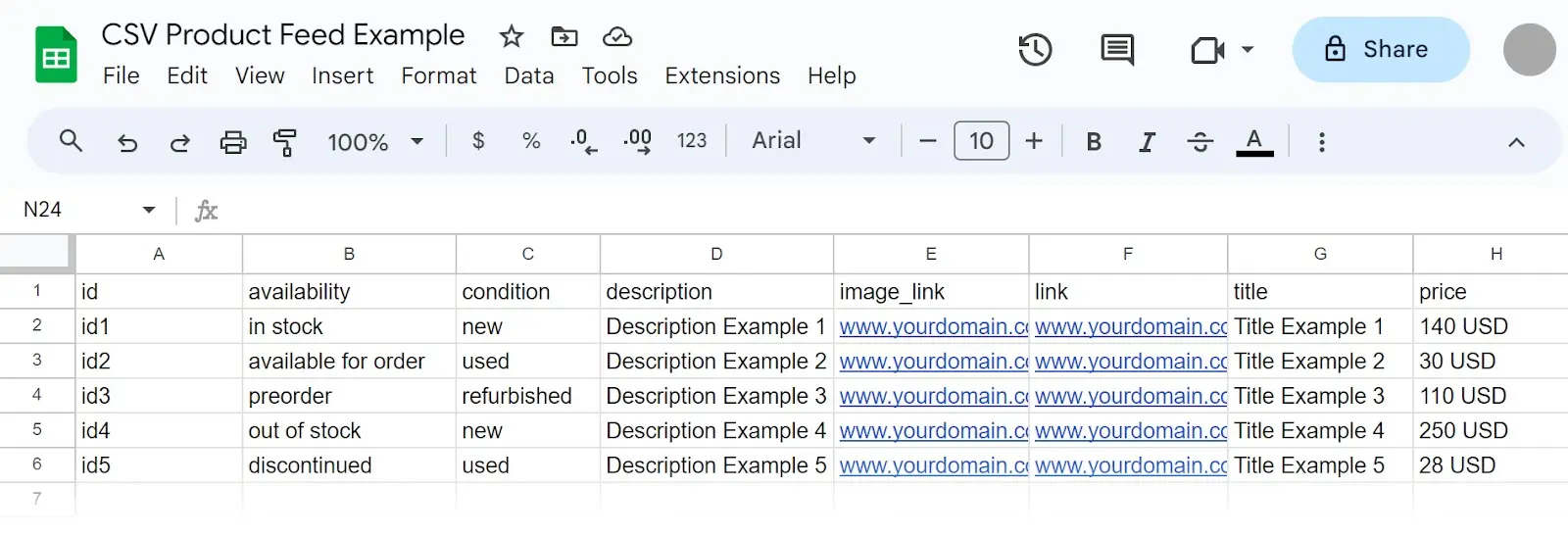
Once your product feed is ready, save it in an XML format. Then, place the feed file on your web server so it can be accessed via a public URL.
You can then submit your product feed to these AI tool providers:
- Google: Submit your product feed to Google through the Google Merchant Center. This may increase the chances of your products showing across Google surfaces like Google AI Mode.
- Microsoft: Submit your product feed to Microsoft through the Microsoft Merchant Center. This may increase the chances of your products showing across Microsoft surfaces like Microsoft Copilot.
- ChatGPT: ChatGPT doesn’t accept product feeds yet, but you can register your interest for when feed submissions open
If you need help with your product feed, speak to a web developer.
How to Track AI Citations
AI systems don’t let you track every AI citation you get, but you can use a tool like Semrush Enterprise AIO to identify commonly cited pages for relevant prompts.
The tool identifies relevant prompts, runs these prompts in popular AI platforms, and analyzes the results to provide a variety of insights.
The “Source Impact Analysis" report shows whether your brand has any first-party citations and whether it’s portrayed favorably in third-party citations.

How to Track Traffic from AI Citations
Track traffic from AI platforms to understand how many clicks your AI citations generate and which pages receive the most referrals.
You can do this by adding an AI Traffic channel group to Google Analytics 4:
- Log in to GA4, select the relevant property, and go to “Admin”
- Scroll to the “Data display” section and select “Channel groups”
- Select the default group or your own custom group
- On the next screen, click “Add new channel” and name it something like “AI” or “AI Tools”
- Click “+ Add condition group,” set a rule for “Source” > “matches regex,” and enter “.*chatgpt\.com.*|.*openai\.com.*|.*gemini\.google\.com.*|.*bard\.google\.com.*|.*copilot\.microsoft\.com.*|.*perplexity.*|.*claude\.ai.*” (you can also add other AI domains, if you wish). Then, save the channel.
- Click “Reorder” and move the “AI Traffic” group above the “Referral” group
Once GA4 has collected enough data, you’ll be able to see your AI Traffic channel group in the traffic acquisition report.
Alternatively, use the Semrush AI Traffic tool to check AI traffic to your own and competitors’ websites. So you can see how you compare to your rivals.

Get Insights to Support Your AI Strategy
Semrush’s AI Toolkit provides insights that can help you get more valuable AI citations.
Monitor how your AI visibility compares against competitors’, see how popular LLMs portray your brand, discover the questions your audience is asking, and get actionable advice to boost your performance.
